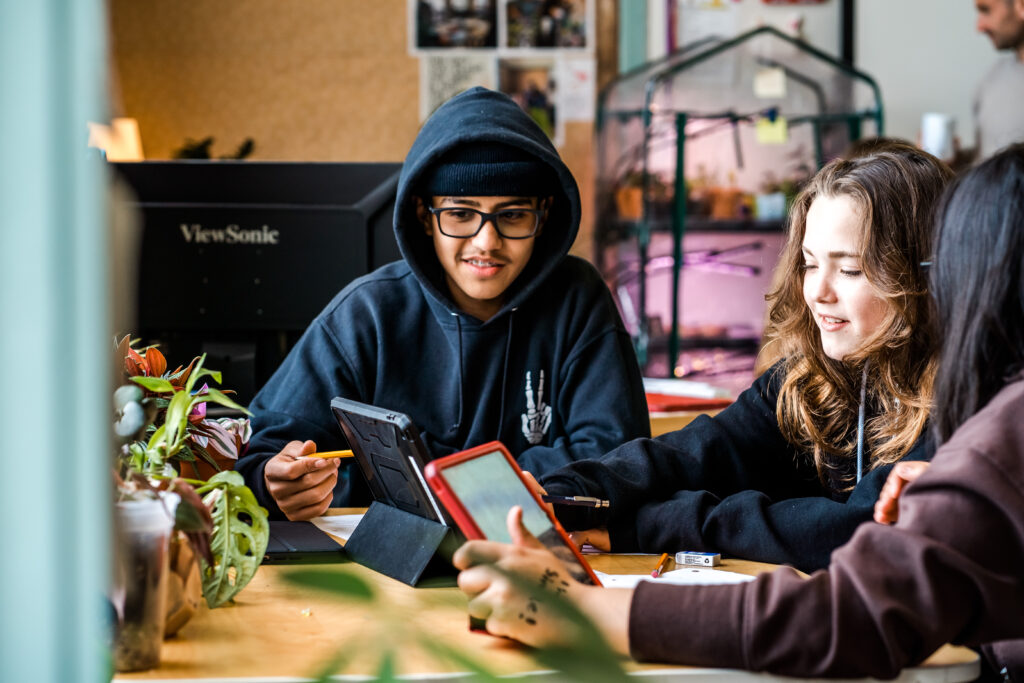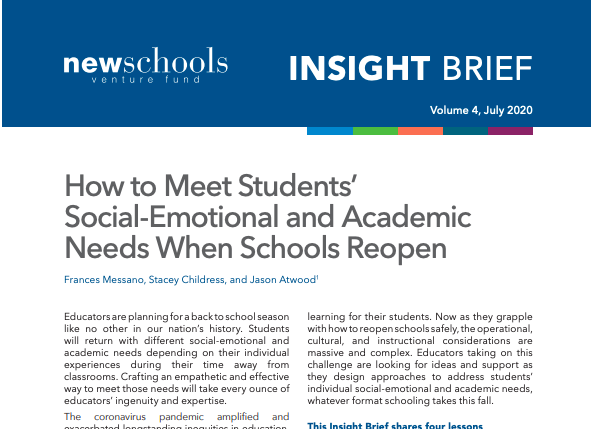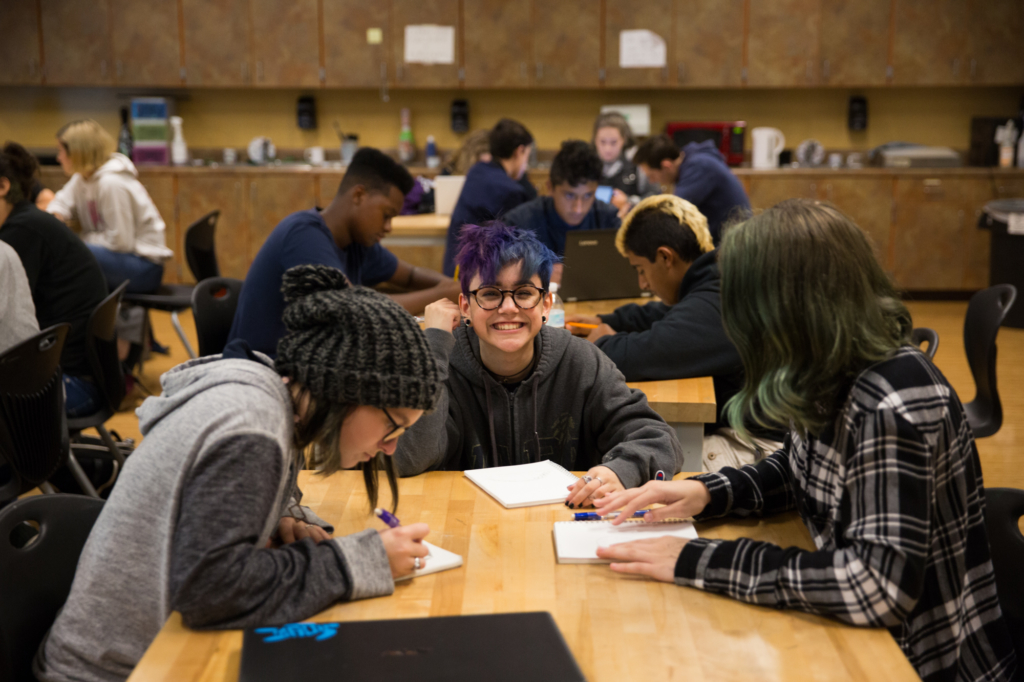By Antonio Tapia, Senior Associate Partner, NewSchools Venture Fund

It wasn’t too long ago that we sat around a table and asked teacher candidates questions in a face-to-face interview. We offered them coffee, took them around the classrooms, and introduced them to the teaching staff before settling in to get to know them. Since the COVID-19 pandemic, hiring has become much more complicated. Now, we communicate with candidates through Zoom. Instead of small talk, we fiddle with our settings to try to get our microphones to work. We tilt the camera up and down and toggle between windows as we try to keep up with presentations on the screen. Above all, we wonder when it’ll all go back to normal.
For school leaders, the shift to an all-virtual hiring process set with the backdrop of simultaneous global health, economic, and racial justice crises raises many questions with few clear answers. But one thing is for sure: the stakes are higher for some people than for others. Black and Latino people, especially those from low-income backgrounds, are simultaneously bearing COVID-19 related illnesses and deaths, the economic downturn, and an explosion of civil unrest caused by the murders of Black Americans. The fact that people of color are underrepresented in the educational field may seem insignificant compared to these crises is understandable. However, principals are still hiring teachers in preparation for the fall, and diversifying the teacher workforce continues to be a critical lever for educational equity — an effort that NewSchools has steadfastly supported. The last thing school leaders want to do now is add to the devastation of COVID-19 with an unfair hiring process.
Although there’s disagreement about whether virtual hiring processes mitigate or propagate biases, there are steps that you can take as a school leader to eliminate bias and level the playing field as you engage with candidates remotely.
First, acknowledge that biases exist and take steps to heighten your team’s awareness around how they show up. There are at least 13 common biases that can play out during an interview. You might be biased towards candidates that went to Ivy League universities (the halo effect). Or perhaps you tend to prefer candidates that came into education through alternative programs in the same way you did (affinity bias). These same biases can surface in unique ways in a virtual hiring process. If a candidate has a slow internet connection, struggles with technology, or has a cluttered home workspace throughout a video conference, you may let that influence your opinion (horn effect) even though it may not reflect anything about their teaching ability.
If you seek to have an inclusive and equitable hiring process, it’s crucial to identify, share, and unpack biases, especially those related to race and ethnicity, before starting interviews. Psychologists at the University of Virginia, University of Washington, and Harvard University have developed this implicit bias test that can help your team uncover unconscious bias and inform your team’s discussion.
You should also embed reflection time after each interview. It might be as simple as a 15-minute block of time during which you encourage your team to call out the biases they struggled with throughout the interview. This exercise is separate from the interview debrief — and before decision-making — to ensure everyone is working from a place of objectivity. The reflection also creates the opportunity for team members to know it’s okay to have biases; it’s not okay to ignore them.
Second, set up a clear, transparent, and equitable process. All of the good intentions around addressing biases won’t do much without setting up structures to support them. EdFuel shared best practices to help identify “the non-negotiable [teacher] knowledge, skills, and mindsets critical for success in a specific position. If an organization does not identify these non-negotiables ahead of time, they run the risk of making hiring decisions based on subjective feelings.” Once you have clarity around the hiring profile for your teachers, ensure you have a transparent process that includes “clarifying team roles, leveraging the use of technology,” and rethinking how you conduct the demo lesson.
Third, be proactive and communicative. Not everyone has a quiet, dedicated workspace, so candidates need clear timelines and expectations for interviews and performance tasks. If you’re a parent taking care of two small children, it’s going to take a lot more time to get mentally and logistically prepared for an interview than before the pandemic. If someone’s family member is struggling with a medical issue, getting into the headspace to have their best interview ever might be a herculean task. Giving ample time ahead of the conversation to prepare will help level the playing field across all candidates. It’s also important to be responsive after the interview and to standardize communications to ensure you’re treating all candidates equally.
Finally, you may want to throw out traditional ways of approaching the interview altogether. For example, a virtual demo lesson will never (ever, ever!) simulate an in-person classroom lesson. Instead of a demo lesson, you might show each candidate a video of a lesson of one of your teachers and ask the candidate to evaluate it. You can learn a lot about their content knowledge, pedagogical approach, and attitude towards other teachers through this process. Or skip Zoom altogether and opt for a regular phone call; this tried-and-true step can help decrease the chances of bias creeping in as you don’t get to see any of the candidates.
Unpacking biases is not easy, and our new environment brings additional challenges, but creating a welcoming, inclusive, and diverse school for your staff and students is well worth the task.
If you’re a school leader or a school system leader, check out our #DistanceLearningLessons webinar series for lessons and resources that can inform the decisions you’re making now to reopen schools safely in the fall.



